Another Timbre TimHarrisonbre
at43 Caisson
Tierce
Jez riley French field recordings, zither, salt, paper, camera, contact microphones, electronics
Daniel Jones turntable, electronics
Ivan Palacký amplified dopleta 180 knitting machine
Concert performance recorded in Hull, November 2010. Total time: 58:40
Interview with Jez riley French
“This meeting between intuitive composition, sound and improvisation has a language of its own.”
First of all could you tell us how the Tierce trio came into being. Geographically it’s not a natural unit insofar as you all live in different cities.
The trio came about when I invited Ivan to the UK in 2007 for a performance at the concert series I run – ‘seeds & bridges’ in East Yorkshire. Originally the idea was for me & Ivan to perform a duet (as we did on another concert during Ivan's visit & when I visited the Czech Republic) & for Daniel to provide the opening set of the night. However in the end we performed a private set during the afternoon (which became the basis for the first tierce release on the ‘. point engraved’ label) & two sets at the evening event.
Since then I have collaborated with Ivan & Daniel on several occasions but the tierce trio has only had the opportunity to perform together again once - as part of seeds & bridges 2010. We are all keen to perform further as a trio when opportunities arise - to spread out, to engage & reflect in a live setting.
‘Caisson’ is in a sense a fairly traditional cd insofar as it's a recording of an improvised concert. But this is increasingly unusual these days. Can you describe the range of your current practices in music, and how does the ‘caisson’ disc fit in with this?
Actually the fact that 'caisson' is based on a recording of a live event wasn't pre-planned. The event itself was slightly unusual for all members of the trio as we performed whilst moving images were shown - though we did not 'soundtrack' the film itself. Some time after the event we all began to feel that a section of the performance was a piece in itself.
In terms of current music / sound related practices most of my time these days is spent exploring (as has been the case for some time) within the realm of listening, field recording and preparing / performing & installing photographic scores. I myself haven't really used the term 'improvised' in relation to my live performances for many years now. I prefer to say 'intuitive composition'. With the tierce trio & the ‘caisson’ cd I think we all feel that this meeting between intuitive composition, sound & improvisation has a language of its own. Certainly one thing I like about it is that the aspect of listening is constantly shifting in a forward motion. Moments are at the core of what fascinates me & tierce seems to be able to find those naturally within the emerging frame of the piece. I for one would like to get the chance for tierce to perform over a long duration, to see how those moments amplify the space around them in an extended period of time. In that sense there is a direct link to the way other areas of my creative interests have developed: time, space, stillness, quietude - even in the midst of a detailed audible field.
You mention "time, space, stillness, quietude", but one of the things that strikes me - and indeed appeals to me - listening to ‘caisson’ is that at times it is quite abrasive. I really like its unpredictability in that sense; it's not by any means the stereotype of a post-reductionist improvisation.
Well, for one thing, what I've come to know & deeply enjoy with listening in terms of field recording is that all of those things (time, space, stillness, quietude) exist even in the most densely populated sounds or sound fields. It's a question of detail - getting ones ears, ones listening in closer & closer - micro-listening perhaps. It’s perfectly possible to sense stillness & quietude in the middle of a busy city for example or indeed surrounded by a natural environment. Likewise if one sits & listens in an empty building, what begins seemingly 'quiet' is soon perceived, in its true state, as very richly embroidered with sound, with its own music.
'Post-reductionist improvisation' - hmm, not sure about that one. Whilst I understand what you might mean by that term I'm lucky enough that I don't really feel part of or involved in a process that bases its path on things like this. I guess there are folks out there whose work is ‘post’ this or that, but I've never been comfortable with these ways of marking time or the evolution of any creative practice. It can have a tendency to sometimes distort history (& therefore the present & future too) & draw attention away from as many important areas as it can throw a spotlight on.
“It's a question of detail - getting ones ears, ones listening in closer & closer - micro-listening perhaps.”
Could you say a bit more about your use of field recordings, because for me it’s certainly one of the most distinctive features of the ‘caisson’ disc? Your recent solo cd ‘Four objects’ presented four recordings in their raw, unedited state in a way I found really interesting, but on ‘caisson’ you are using a variety of field recordings in a far more ‘composerly’ way, as elements within the overall flow and structure of the music.
‘Field recording’ is something I do, & have done, for the sheer joy of it for a long time. In that respect using them in a live context is simply me making use of elements I find pleasing, the same as if I use a certain approach on a conventional instrument. The use of them also alters whether it’s in a solo performance or in an ensemble. For example on ‘caisson’ some recordings I use add texture - they are used as an instrument within the trio - & then they also can create moments of rest or space - in a similar way as a conventional composition might use ‘silence’.
I never really process the recordings I make - for me the fascination & subtle power of these discoveries is in their unaltered state - however presenting them as I do on ‘four objects’ for example is something I see as more than mere documentation. I’m not sure I can really put into words why it isn’t but perhaps it’s close to say that the choice of when to press record, when to press stop & how much the minute detail & overall vista contained within a recording becomes composition - intuitive composition that is as in the field I am simply in the moment. At least I am when I manage to get recordings that prove to be the most interesting to listen back to.
I’d also say though that although this thing called ‘field recording’ exists, really what I do is listen - I listen in different ways & this has, I’m sure, a pivotal effect on any performance I’m involved in. I think also this is what makes tierce such a great trio to be part of. Both Daniel & Ivan listen (to others & themselves) in ways that are quite different from the mainstream of current improvisation.
“Retaining ones sense of wonder when it comes to exploring music is fantastic.”
You've been engaged in various ways - musically and photographically - with the music of the Wandelweiser composers. What is it that has drawn you to their work, and how has if affected you?
I happen to like some of the work of some composers within the Wandelweiser group but no more so than a huge range of other music, sound, visual art, cooking, eating....life etc. I might listen to a piece by Antoine Beuger for example but in any one day I'll also listen to music by any number of other composers such as Herbert Howells or Takemitsu or Delius & of course other forms of music & sound. I've only got to know Wandelweiser in the last couple of years anyway & even then not all of it. I guess the pieces I like have tended to be the ones with very clear lines but I don't feel it's a big enough part of my listening landscape to have an effect that can be discussed in this way. I always find these sorts of question tricky to answer - it always seems to me that there is so much to listen to, to engage with & if we're lucky we'll perhaps get to experience about 0.0001% of it, so to have an effect on ones own work it seems to me one would need to have a rather narrow way of thinking, of listening. The very best thing I can say at this point is that retaining, naturally, ones sense of wonder when it comes to exploring music is fantastic.
I find that eclecticism, of being open to a wide variety of experiences and musics refreshing. It feels that sometimes people in the arts like to build barriers separating them off from other artists or genres. Is this something you’re aware of within improvised and contemporary musics?
Ah - now, this is a question that’ll open a can of worms, so I shall try to be succinct in my response. I think the issue you raise is certainly a major one here in the UK at least & has been for some time. The ‘art world’ has in recent years used the term sound art to re-write the history of artistic & explorative music / sound. The almost total lack of knowledge of these forms by the art establishment (curators, writers etc) means that very often work is given credit & exposure that is either of a low quality in terms of its originality, all be it often with a whitewash of dense hyperbole added, or in other ways seems like a step backwards to those with an active interest & enjoyment of these forms The effect is then circular - musicians / composers find that in order to access funding or certain creative spaces, they have to use the same language as the art world does, to apply the same terms & to frame their work in a way that will be understood by people who very often would have no interest in their work otherwise. It is a sad truth that the majority of people with an interest in contemporary visual art have a wide ranging & very open attitude to those forms, but, when it comes to music / sound things can be different & the mainstream, commercial forms tend to still dominate. People are of course free to like whatever music they want - it’s more that there is this huge divide between people’s expectations & passions for visual arts & their exploration of music / sound. Many folks will go to see a ‘sound art’ exhibition now of course, but there is a disconnect between that & explorative music, fostered (I believe) by the art world lack of knowledge or interest in non-mainstream music. Oh & don’t get me started on the fact that 99% of art openings will feature third rate ‘indie’ bands or DJ’s hammering out the most banal ‘music’ . For me there a rather arrogant or perhaps lazy assumption there that everyone wants to listen to that kind of thing (in whatever context). It means that what you end up with this constant circular dumbing down of the culture & no engagement by the curators & therefore the audience, with music that is valued with the same range of criteria as the visual arts. Of course this disconnect can be traced back to the time when music became increasingly about entertainment rather than ‘art’ - the way it was separated from the term ‘the arts’ & instead came to be a commercial industry. Having said that, explorative music has always been a true art form if one used the same definitions that one would apply to the other arts. Sadly it’s the art establishment that hold the keys to doors & the purse strings & so it seems, for now at least, the work that will benefit from better access to performance spaces & opportunities & indeed to funding (private or public) will mostly be the work curators know of - & that will be defined by their own listening tastes & dedication to ‘looking beyond’ - rather ‘listening beyond’
It’s also fair to say that ‘other’ music scenes have their own sets of blinkers which are sometimes in evidence. It’s possible to perceive a mainstream & conservative outlook amongst those involved at times. The odd thing is that it’s often the most conservative people who seem to believe they aren’t at all.
Reviews
“Tierce is an international trio of electroacoustic musicians which has existed since
2007: first Jez riley French (electronics, objects, field-recordings, zither, contact
mics, etc..), Daniel Jones on turntables and electronics, and finally, Ivan Palacký
on amplified knitting machine (... yes you read that right). The performance that
gave rise to the disc Caisson was a single piece lasting an hour at a concert recorded
in an art gallery in Hull in November 2010.
So imagine a fairly large box or cabinet
('caisson') of any sort, the important thing being the space that it contains rather
than its function. Because space seems essential for these three musicians: the
electroacoustic music offered here is a kind of sound design in which the sounds
define and individualise the space as they fill it. What sounds then? It's difficult
to say; it navigates constantly across DIY electronics, field recordings of all sorts
(bells, various background soundscapes, birds etc...) and strange sounds that are
unrecognisable. All this is mixed together and merged into a single fluctuating,
shifting field, which is both light and corrosive, aggressive and calm. No hierarchy
is established between the various sound sources, they all belong to a single stratum.
And this stratum carves a space out of time, a space that is created at the same
moment as it is inhabited by the music.
Of course, there is a particular form of sonic
exploration at work in Caisson; each of the three musicians trace a soundworld that
is strictly personal, but timbre doesn't seem to be their primary concern. They
all seem more interested in the spatial properties and characteristics of the sounds:
how will such a noise fill the space?, how will the hearing of some other sound
be experienced within the spatial environment? Caisson plays above all with sensory
perception ("micro-listening" as Jez riley French says in his interview for Another
Timbre), the trio plays with the possibilities of changing our perception (which
is auditory in one sense, but also visual, and – why not? - olfactory and taste-based)
through a careful listening that evolves in a global environment whose objectivity
and solidity are here put in question.
However, despite the tranquility that characterizes
it, this music is also rather tense, doubtless because of these constant shifts and
fluctuations, partly as if any form of stasis was feared, but also because of the
often abrasive sounds that are used, which progressively fill the space in an apparently
ineluctable process. A space that is filled, but not only by sounds: silence also
has a prominent place across the spaces of this piece, a silence so pervasive that
it becomes the equal of the sounds with which it interacts. Silences of a frighteningly
heavy substance. A music that is above all not static, nor linear, but which evolves
across an unstable terrain that is in flux, across spaces that are sometimes saturated
with noises, or else with silences, but also across airy regions that would be suitable
for meditative contemplation. An approach that flirts with the infinite (time as
well as space), so calm and poised that no border would be able to delimit this universe.
I haven't heard Tierce's first album, which was released on Jez riley French's
label, but Caissont, despite some difficulties in approaching it due to the considerable
attention it requires, takes us on a unique micro-sensory journey across a space
that the musicians have brought into being and in which they are fully invested.
Their approach to sound and its 'intuitive' unfolding is radical, and this creates
a music that is bizarre, unexpected and unprecedented, but once you have overcome
your cultural reticence, Caisson has the ability to take the listener inside some
fantastic spaces where the Kantian categories of perception are annihilated at the
same time as they are exacerbated. A supernatural music seems to allow the opening,
maturing and fulfilment as much of perception itself as of the things perceived (especially
sound, and space and time).”
Julien Heraud, Improv-Sphere
“Tierce is a trio embodied by Jez riley French, Ivan Palacký and Daniel Jones, working on an array of peculiar and regular generators of sounds that include a zither, contact microphones, electronics, turntable and an amplified knitting machine shrewdly combined with plenty of field recordings. The latter inform a substantial portion of the record but never overwhelmingly, although clearly representing an essential constituent of the whole. In an interview on the label’s website, French indicates his preferred definition of the music as “intuitive composition” in lieu of “improvisation”. I tend to agree with him, for Caisson appears as a somewhat pre-organized work, not something devised on the spot.
If one’s focus is not fossilized on the incidence of elements from everyday’s time, the parallelism that more than once comes to mind has to do with Keith Rowe’s aesthetic laws. Not only for the way in which, for example, the acoustic imagery shifts from glimpses and close-ups of concrete manual tampering to the relentless presence of lengthy rumbles, hums and pitches at the extremes of the auditory range. What causes the association is, mainly, the extremely deliberate pace through which the overall design is developed, highlighted in sections where we’re left without a clue about what’s going to happen a moment later.
The waiting is usually rewarded by subsequent acoustic occurrences that persuade the ears in their vague familiarity, yet are also far from predictable. The participants proceed with the exploration in total confidence, apparently sheltered from any potential unconstructiveness. Flashes of people’s lives and scrupulous investigations of the inherent properties of the bits and pieces utilized by the threesome are alternated with stretches of incorruptible droning and morsels of quasi-hush barely broken by subtle noises. Clear-headedness prevails all along the path, an important aid for the correct assimilation of this stimulating album.”
Massimo Ricci, Touching Extremes
“Tierce's disc is nicely abrasive, yet relaxed – is that a contradiction in terms? More evidence of my increasingly de-sensitized, skew-whiff listening practices? Let me explain: what I mean is that the sharpness of metallic scrapes and whirrs from knitting machines, turntables, and the like, is somehow neutralized, or softened, by the overall fullness and slowly – gloopily? - evolving textures of the music as a whole, each musicians' field of activity itself comprised of further fields, several layers opened up at once, discs left spinning, drones left droning, scrapey things continuing to be scraped. In this context, French's field recordings tend to act, not so much as interludes, nor as palette cleansers, but as moments of clarity – though the recordings themselves probably contain just as many layers as the louder electronic tactilities of the music itself.
Interesting to consider, in fact, the variety of ways in which the field recs are incorporated, not so much as decoration, but as something like external prompts to enter into different sound fields, or as some kind of glue or paste to mark a particular transition – Annet Nemeth's 'Paupers Guide to John Cage' uses them in a similar, though perhaps more integrated way. This certainly has more of traditionally improvised feel than Nemeth's piece (even if Nemeth's is more of an 'intuitive composition' (a term, in fact, that French explicitly prefers to 'free improvisation')): some of my favourite parts of the disc are those moments when one layer suddenly cuts out and the whole texture radically changes, a change that the musicians either work with / against to suddenly fill, in a change of direction, or leave hanging, as a silence, or near-silence, in which sounds will only gradually be built up again – as at the section which occurs shortly before the twenty-five minute mark here, French's recording of corridor-echoing footsteps and floorsqueaks, itself full only of intermittent activity, peppered with two sets of white noise – one fizzing and popping in something approaching an extremely spread-out rhythm (though its temporal experience can't really be said to be rhythmic), the other continuous, a bit like a boiling kettle or a distant traintrack squeal / rumble crossed with muffled aeroplane take-off, though with wind-chime decoration at the edges (a rich sound, certainly, one which moves into electronic feedback to suggest that it was generated through physical means, though there may field recordings aspects melding into it as well, for all I know). This is, in fact, what feels like the most extended 'section' of the record as a whole, non-imposing, and perhaps not confrontational enough, after the sharp-edged sounds of the opening, the field recordings rendered somehow bland, ticking along with generally urban-based noises, the final section charting some gentle stroll round a block of flats, ending with the sound of a buzzer. Said buzzer, though, thankfully ushers in some zitherized
scraping and electronic swells that proceed out of silence rather than from that ambient / ambulant fuzz, and are actually quite exquisite, hints of an almost impossibly slow-moving melody. Maybe that focussed and fragile intensity could not have been achieved without the long field-recording section before it – that said, I'd have preferred, heretical as this might make me sound, that a little editing had gone into the previous section. As it is, the rest of the disc ticks, or looms along nicely, the pitched feedback drone building up, some utterly eerie looping sound made from I don't know what source – it sounds like a muffled wind-up toy, maybe Palacky speeding up and slowing down his knitting machine? –winding and wrapping itself along the rumbles and buzzes and static electricities that have now entered the sound picture: and a few of the elements we hear here – that near-melody, the wind-up toy-or-not – are true little burrowing ear-worms, exquisite indeed.”
David Grundy, eartrip magazine
“So tonight a CD that I have been looking forward to hearing for quite some time, the second trio release by Tierce, the group made up of Ivan Palacky, (amplified knitting machine) Daniel Jones (turntable and electronics) and Jez riley French (field recordings and no end of other stuff). The album is yet another release in the new batch from Another Timbre and is named Caisson. To get the inevitable caveats out of the way, while I haven’t actually heard this music before I know a couple of the musicians well, one of them very well, and only my own technical and organisational incompetence kept me from hearing a rough version a while back. As ever though, my thoughts on the music remain, in my opinion, as objective as can be. I think I’m going to write that paragraph up as a separate page and just link to it from time to time
The first thing that hits you about Caisson is how bright and clear everything is. I’m not sure how much tweaking was done at the mastering stage, but this is the loudest I ever heard Daniel Jones’ output before, and everything sounds very crisp and crunchy. Often I hate this kind of thing, but here the tweaks on the EQ (I’m guessing) do bring everything nicely in to the foreground, though at the same time separating the three sets of sounds quite clearly rather than letting them merge together. On the whole we hear vaguely metallic bumps and thuds and whirring percussion from Palacky, little stabs of fizzing and sparking gritty electronics from Jones and field recordings (birdsong, traffic, the usual) from French though his list of instrumentation also suggests he added various other acoustic elements as well.
In some ways this is your everyday modern improvised trio, sometimes blending sounds together, sometimes setting them against each other as jarring shifts in dynamic. There are loud, collective clouds of noisier parts where things boil up into near angry chaos, but also plenty of parts where it all slides apart into near enough silence. What sets this apart from a lot of recent improv however is the way the field recordings are used. They are not disguised, and often sit clearly as part of the music for some time. At around the half hour mark (the entire disc, recorded live clocks in at about an hour) a lengthy recording of a city can be heard, full of traffic, crowd noises, passing trains, the footsteps of whoever (presumably Jez) is making the recording. This field recording at one point dominates everything, For a while there is a nice rhythmic exchange between Palacky and some buzzing distortion from Jones but soon after they seem to give in and just let the recording go about its way, only picking things up again later after French’s cinematic yet overlong contribution ended with the thud of a closed door. When this section passes though, a really lovely section consisting of a sustained sine tone and some deep rumbling metal is very lovely, only really losing impact as its volume rises a little too high and the subtlety is lost a bit.
Caisson moves through all kinds of section then, almost like several separate tracks pulled together into one live set. Its hard to know if any editing took place but if not the way the various elements slide into one another is really quite confidently and adeptly done. The passage that can be heard from around the forty minute mark onwards, looming, dark clouds of something undercut by insistent piecing tones and odd little bleeps and bloops is really very nice indeed. If field recordings are used in this part then they work better here than anywhere, perhaps as they are impossible to identify and so become part of the abstract pieces of the puzzle rather than just a bed for the other sounds to lay over the top of. A more obvious recording then appears for the closing few minutes, some kind of vaguely industrial sounding space complete with large objects banging softly and a brief whistle from someone. Here again though Jones and Palacky drop away to let this audio picture dominate the closing section when I would probably have preferred them to confront it head on, taking it as just another sound element to react to rather than allow its narrative to take the lead.
Still, tiny quibbles aside, this is a lovely album. The music is understated, with Palacky and Jones in particular finding very nice ways to work together as French seems to drive the shape and structure of the music. Its a significant step on from the brief 3″ disc the trio released a few years back, more nicely recorded with better production values and much more space to stretch out and breathe. I suspect that given the multitrack files I might personally have chosen to mix the disc a little differently but that’s just a matter of taste. A very nice release indeed.” Richard Pinnell, The Watchful Ear
“Caisson is the title of the second album by the trio now called Tierce which consists of Jez Riley French on a range of sound sources including field recordings, zither, salt, paper, camera, contact microphones and internal electronics, plus the Czech Ivan Palacky on amplified Dopleta 160 knitting machine, and Daniel Jones on turntable and electronics; Tierce's first release was the mini CD Tierce (Engraved Glass, 2008), credited to the three individuals.
Rather than being studio-recorded (or constructed), Caisson was recorded live at French's concert series Seeds & Bridges in Hull in November 2010, and its single 58 minute track is a part of the performance selected for release by the players after the event. Although the list of instrumentation may read rather strangely, the combination works and the sounds fit together well, with Palacky's knitting machine being a reliable stand-by to produce industrial rhythmic passages and Jones frequently supplying electronic glitchery. The clarity of the recording is commendable. If anything, the field recordings of everyday sounds tend to dominate, as they are given considerable space by Jones and Palacky who back off rather too easily, leaving the field to French.
Caisson is certainly fitting as part of a series celebrating the anniversary of Cage's Silence; it features the types of sounds that can all too easily become lost in the hubbub of modern life and that are enthralling once they are afforded the attention they do not normally merit—yes, exactly the types of sounds that Cage meant listeners to focus on during his "4' 33."
John Eyles, All About Jazz
“One piece, about 58 minutes long and an enjoyable if not always riveting one. That's perhaps unfair as "riveting" is unlikely to be what this trio was aiming for; one has more a sense of deriving enjoyment from an unforced kind of meandering (meant in a good, ambling way), the elements introduced leisurely, with ample space. You don't get the sense an arc of any kind was intended, more of a "walk". It densifies about 15 minutes in, storms for a bit before splaying out for most of the remainder. A fine web of titters and tones, hums and speckles. A perfectly good stroll.”
Brian Olewnick, Just Outside
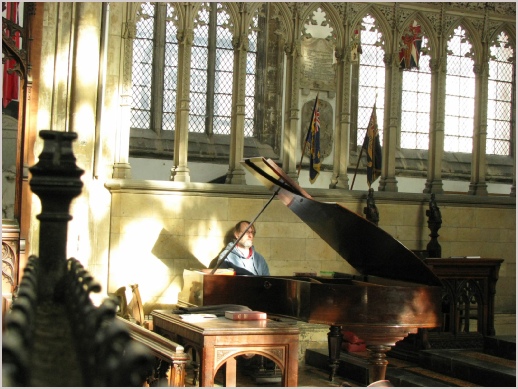
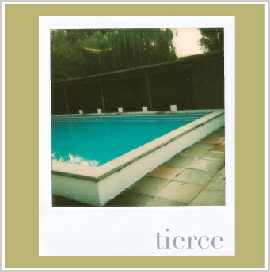
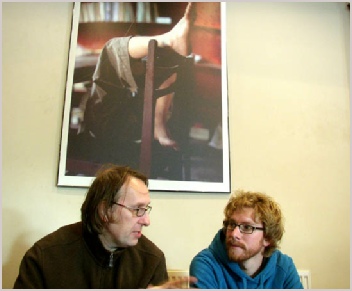
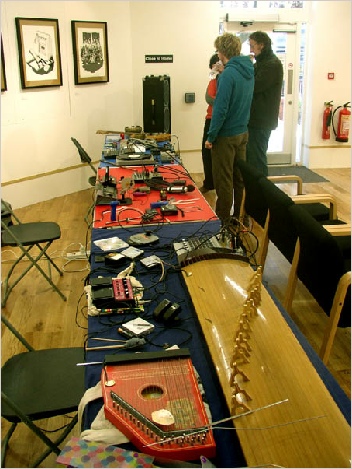
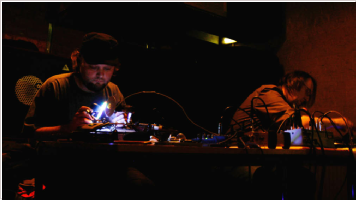

Discount price £5